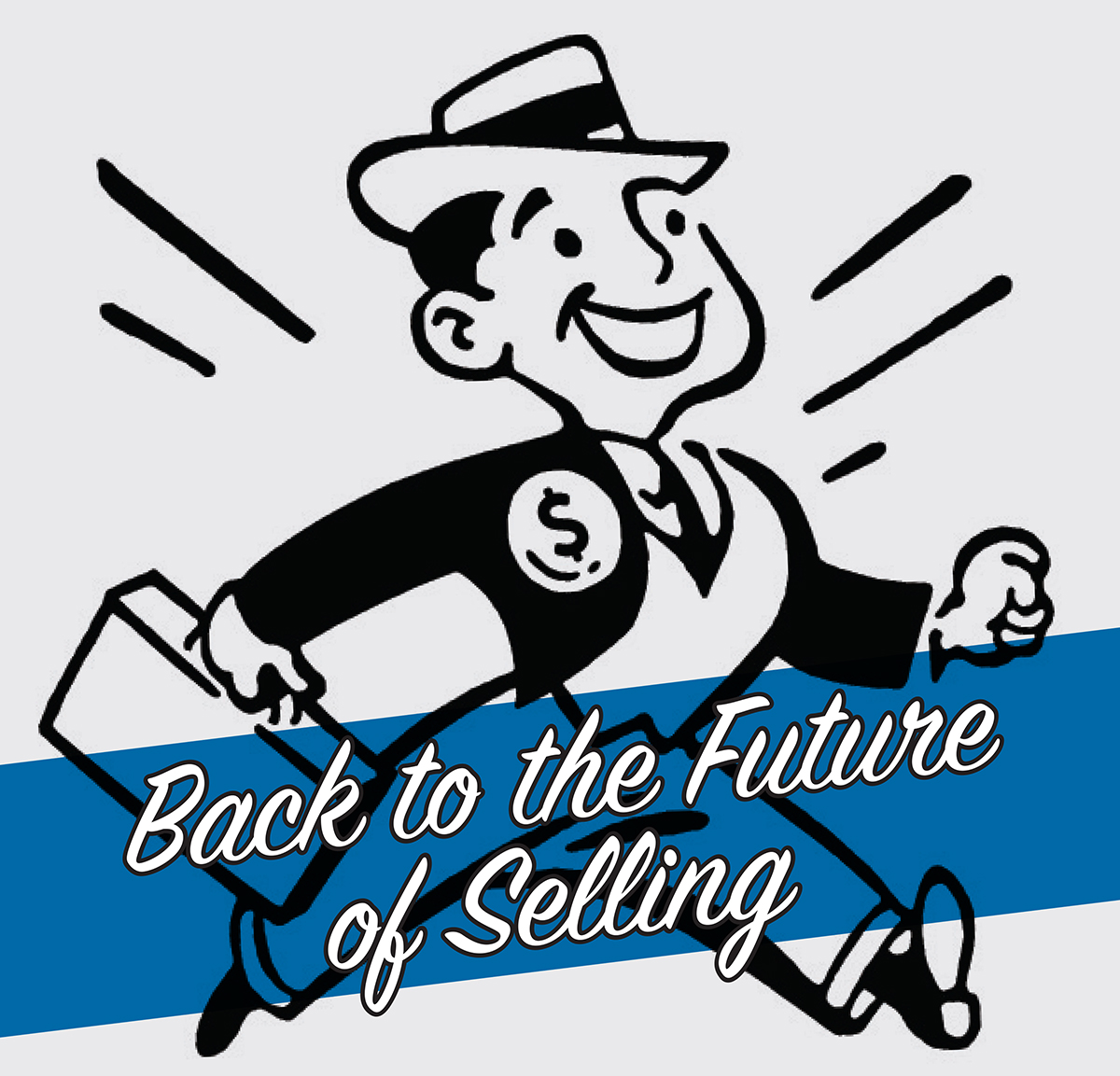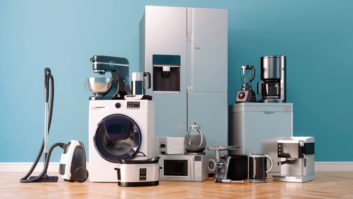
You had me at hello. Or maybe not.
In consumer tech retail, the measure of success begins as soon as the customer walks through the door. If this sounds basic, it is — the basic skills of selling form the backbone of retail success. This applies for retail tech sales and any product involving technology features.
“It’s important to continually train and remind sales staff of the basics,” said Bill Stuart, CEO of Stuart & Associates, a consulting firm that works with retailers and manufacturers. “Even if you have many years of sales-floor experience, ask yourself if you’ve changed with the times and grown, or if you’re selling the same old way.”
See also: 13 Of The Best Sales Tips For Consumer Tech Retailers
“The basics are a recipe for success for everyone,” he added. “A reminder to salespeople and management alike.”
The basics of selling come down to four tenets, said Stuart: greet and engage the customer; uncover that customer’s specific needs; recommend choices by getting them actively involved; ask for the sale.
If the greet and engage is not done properly, rapport is not established. Stop with the clichés such as “Can I help you?” A better greeting is “What brings you in today?” or “I see you’re looking at the newest phone/TV.”
If they say, “I’m just looking,” then use the restaurant approach by thanking them for coming in and telling them you’ll be back to answer questions.
See also: Coming To Grips With The ‘Hypercompetitive’ Job Market
Asking for the sale, Stuart said, is as easy as asking, “Based on what you told me, I recommend TV A or B. Which do you prefer? We can deliver and install on Monday or Wednesday. Which day works best for you?”
With all of the information available on the Internet, John Quattrucci, Stuart & Associates president, knows he can teach anyone tech specs. “But what I can’t teach is how to use the knowledge to interact with consumers in a conversational way.”
After all, why do consumers come into a brick-and-mortar store in the first place? “Because they want to talk with an expert — someone to take the tech that they saw online and simplify it so they really understand what it means specifically to them,” he noted. “Customers are not the same as they were years ago. They shop online, but a large segment prefers brick-and-mortar because they want someone to look them in the eye and affirm what they need and that they made the right decision. When they walk out the door, they should be thinking, ‘I can’t wait to start using this device’ because of the picture painted by the salesperson.”
School’s Out
Most salespeople don’t know how to explain things so that the customer knows exactly how this impacts them, Quattrucci added. “It’s not an easy thing to do. I have seen instances where the reps go through all the features of a product for the sales staff, and then that salesperson spouts out all the features they were just taught. What they should do is just pick a couple of the features and their benefits that relate to that specific customer.”
Watch: Target Raises Minimum Wage To $13 An Hour
Millennial salespeople, for example, assume that everything is about the device when the reality is they struggle with approaching customers, he said. “Because of their reliance on devices, their social skills suffer.”
Quattrucci recalled his own personal experience: “I was in a store, talking to a young guy about a broken phone. He went on and on talking about how his wife left him, and I was dumbfounded. He thought we were that comfortable. I wrote an email to the CEO about this and received a call back from the store manager who explained that was not the norm.
See also: 90% Of You Stink At Selling
“The biggest challenge today is how to effectively train millennials salespeople — that’s who is being employed in tech retail. We want them to ask themselves how they would act if their parents or best friend came in to buy something. That should be the model with every customer.”
With body language, it’s important to remind salespeople that posture and eye contact are important. “As a customer, I don’t want a mental image of the salesperson leaning against something or slouching in my house,” said Quattrucci. “They may think they look casual, but to some customers it looks unprofessional.”
Dressed, Pressed and Ready for Success
Lifestyle is an significant point, said Rick Albuck, business development VP of 2020 Companies, a sales and marketing agency. “Through a variety of training approaches — from role play, demos and online educating about the products we represent — we focus on communication and that solid consumer-centric approach. Listening better is crucial.”
In addition to experiential marketing, 2020 provides brand advocacy for major manufacturers to enhance the retail mindshare of the retail sales associates. “As an organization, we use a consumer-centric sales methodology, and a lot of that features a back-to-basics approach, such as even having a shirt tucked in and shoes shined for personal presentation,” he noted. “Get what you need to get going for the day.”
See also: Buying Group Insights
We like to teach our brand advocates and assisted sales professionals not to stress the ‘Jones effect’ — keeping up with the Joneses,” Albuck added. “Rather, we train on the overall product experience and how it can influence the end user’s lifestyle. We hold in-store workshops for consumers on assisted selling days.”
“Training and performance management are critical too,” he added. “Our field management has weekly quick-connect reviews in stores, weekly one-on-ones with our sales teams for best practice reviews, and side-by-side in-store sales team coaching. Through all this, we can identify the top talent.”
The Durable Dream
Tech and training encompasses many products including consumer tech, bedding and even furnishings, explained Dev Mukherjee, executive VP, digital, technology and business services of Nationwide Marketing Group, the member organization for independent retailers. “There’s tech in beds for features and functions to control cooling, warming, support and vibrating. Furnishings have a lot of tech to keep pieces clean and make them easy to move around. Appliance tech has also increased with screens on refrigerators and everything connected to the smart home with Google Assistant and Alexa.”
See also: 5 Things Retailers Should Take Away From The Apple Card News
What characterizes these big-ticket items is that they are purchased once a decade or so, not every day, and consumers have a fair amount of fear, if not anxiety, around the purchase, he said. “When you add up all the durables and kitchen appliances in a home, the total replacement cost is often greater than the value of the household car,” said Mukherjee.
“Appliances and consumer electronics have an impact on value and livability of the home,” he added. “Just as the cost can create consumer anxiety, the No. 1 job for the salespeople, the folks who work for our members, is to help the customer to a successful outcome, not just to sell them something.”
See also: Help Wanted: Ark Builders Needed
Otherwise, Mukherjee pointed out, they may have sold something that might come back, losing the customer forever, and initiating an unhappy experience that the customer can tell people about using Twitter or other online forums. “It used to be that an unhappy customer would talk to 10 or 15 friends and family members, but now, with reviews, Twitter and Facebook, a positive or negative comment can reach hundreds of people and last forever.”
Watch: This Is The Last Blockbuster Store In The World
Mike Whitaker, director of Nationwide’s Learning Academy, said that many sales leaders among its membership admit they really have not budgeted enough time for sales training.
“At the very least,” he noted, “you have to budget this time and be disciplined in the execution. Even if you don’t read a book on sales, you need to regularly get the sales team together to discuss best practices, successes and failures — how to be better at professional selling, and to have what Malcolm Gladwell calls ‘deliberate practice’ in his book, ‘Outliers.’ ”
Without that deliberate practice, Mukherjee said, “we don’t get better and we fall into bad habits, forgetting the basics of selling. The world is changing, not just in tech but in the consumers’ dreams, and salespeople should fulfill the dream the consumer had when they set out to make the shopping trip in the first place.”
With deliberate practice in mind, he added, managers should get the sales team together for at least 15 minutes before opening to exchange the latest customer questions, upcoming promotions and new product information.
The dream the customer had on their way in to make the purchase may be to replace a washer as cheaply as possible or purchase something for the first time, Mukherjee said. “Consider that customer who hasn’t made a major appliance purchase before but now has a family with kids. The salesperson has an opportunity and duty to guide the customer on the innovations that save time and money and simplify life.”
“So the role of the salesperson is as advisor and advocate,” he added, “and the need is for them to be able to affiliate, to create that connection between themselves, the consumer, and the store. With a positive experience, the customer is more likely to come back, to recommend the store and even less likely to shoplift.”
See also: The (Renewed) State Of Home Audio













